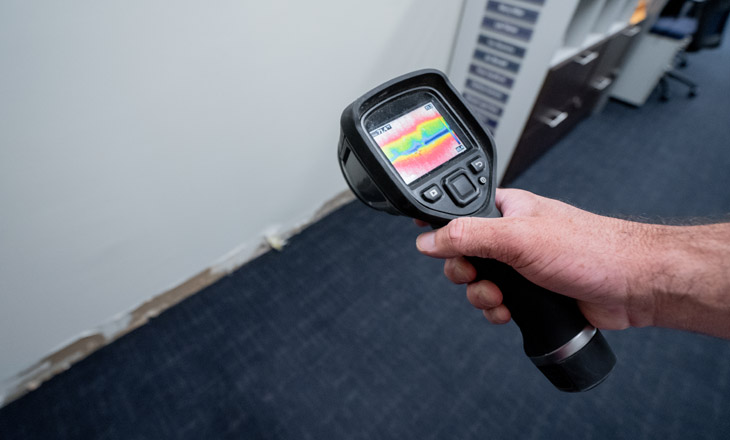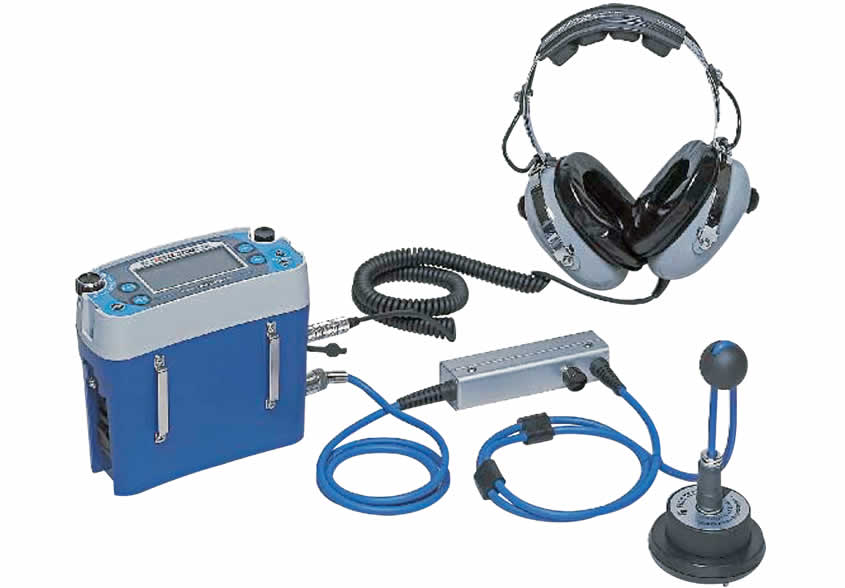Ingenious Solutions for Early Discovery of Water Leakages in Buildings and Facilities
From innovative leakage detection modern technologies to the release of IoT sensors for real-time tracking, the landscape of leak prevention is evolving rapidly. Automated water flow evaluation systems are reshaping just how leaks are recognized and dealt with, paving the way for a positive strategy to water leakage detection.
Advanced Leak Detection Technologies
Advanced leakage detection modern technologies, outfitted with advanced sensors and formulas, play a critical duty in promptly determining and determining water leaks in various setups. Electro-magnetic sensors can recognize adjustments in electromagnetic areas caused by water, using yet one more layer of leak detection capability.

IoT Sensors for Real-Time Tracking
In the world of contemporary water leak discovery, the integration of IoT sensing units for real-time monitoring stands for a critical improvement in enhancing proactive leakage discovery capacities. These sensors supply constant monitoring of water systems, supplying real-time information on water flow rates, pressure variants, and temperature adjustments. By leveraging IoT technology, these sensors can identify even the tiniest abnormalities in water use patterns, enabling very early recognition of potential leakages prior to they rise into major problems.
IoT sensors transfer data to a centralized system, where innovative algorithms assess the info and create signals or notices when irregularities are found. This real-time monitoring capacity enables homeowner or facility supervisors to immediately attend to leaks, decreasing water damage, lowering repair service costs, and saving water resources.
Additionally, IoT sensing units can be integrated with structure monitoring systems, enabling for automated actions to detected leaks, such as turning off water shutoffs or triggering pumps to alleviate the influence of leakages. In general, the execution of IoT sensing units for real-time tracking significantly enhances the effectiveness and performance of water leak detection in buildings and infrastructure.
Device Discovering Algorithms for Leak Prediction

One secret benefit of utilizing artificial intelligence for leakage forecast is its capacity to constantly find out and boost its precision gradually. As more information is accumulated and fed right into the formula, it can improve its forecasts and adapt to changing problems, inevitably enhancing the integrity of leak discovery systems.
Additionally, artificial intelligence their website algorithms can aid in recognizing refined indicators of leaks that might go unnoticed by traditional tracking approaches. water leak detection. By analyzing complicated information sets in real-time, these algorithms can supply very early warnings and alerts, enabling for timely treatment and preventive maintenance to alleviate prospective water damage and linked costs
Utilizing Thermal Imaging for Leak Detection
Thermal imaging modern technology supplies an appealing method for discovering water leakages in numerous systems and frameworks. By using infrared radiation and temperature variations, thermal imaging cams can identify hidden leaks that are not easily noticeable to the nude eye.
One of the vital benefits of thermal imaging for leakage discovery is its non-intrusive nature. Unlike traditional methods that may require breaking right into wall surfaces or floors to situate leakages, thermal imaging permits non-destructive screening. This not only conserves time and minimizes expenses yet also reduces disturbance to the structure or facilities being examined. Additionally, thermal imaging can swiftly check large locations, providing an extensive introduction of possible leakage sources in a prompt manner. On the whole, using thermal imaging technology improves the efficiency and precision of water leakage discovery, making it an important device for maintaining the integrity of buildings and frameworks.
Automated Water Circulation Evaluation Solutions
How can automated water flow analysis systems change the detection and management of leaks in next page different systems and infrastructures? Automated water circulation evaluation systems provide a positive method to leak discovery by continually keeping an eye on water flow rates and patterns. By establishing standard information, these systems can swiftly recognize deviations that may indicate a leak, allowing timely intervention to avoid substantial damage.
These systems make use of innovative formulas to examine real-time information and offer immediate signals when abnormalities are identified, moved here permitting speedy activity to be taken. Furthermore, automatic water circulation evaluation systems can be incorporated with structure management systems or IoT platforms, boosting overall efficiency and making it possible for remote tracking capacities.
Additionally, the information collected by these systems can be utilized for anticipating upkeep objectives, aiding to identify prospective weak points in the facilities prior to leakages take place. In general, the execution of automatic water circulation analysis systems can considerably boost leak detection and management methods, inevitably resulting in cost financial savings, lowered water wastage, and raised sustainability in structures and facilities.

Conclusion
In conclusion, the assimilation of advanced leakage discovery innovations, IoT sensors, artificial intelligence formulas, thermal imaging, and automatic water circulation evaluation systems offers ingenious remedies for early discovery of water leakages in structures and framework. These innovations enable real-time tracking, prediction of leaks, and effective discovery methods to avoid water damages and wastage. Executing these remedies can assist in keeping the stability and sustainability of water supply in numerous setups.